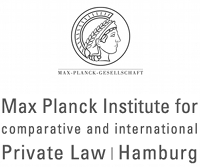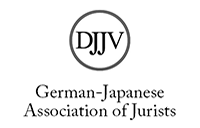An Earlier Experience of Lay Involvement in Court Decisions in Japan – The Jury 1928–1943
Abstract
In August 2009, after much planning and accompanied by great publicity, mixed, or saiban-in, courts, in which professional judges and randomly chosen lay judges together decide guilt and sentence in serious criminal cases, began. This was not Japan’s first major experience of popular participation in the administration of criminal justice. A jury system operated from 1928 to 1943. It was not, however, a success.
This article describes the reasons for the reception of Western laws in Japan in the late 19th Century, the growth of interest in a jury system, and the campaign, principally led by lawyers, that resulted in its creation in 1923.
Main features of the 1923 Jury Act and also the steps taken by the government, jury supporters and the press to promote knowledge of it and smooth its introduction are set out.
An account of the operation of the jury from its commencement in 1928 until 1943, when it effectively ceased, is presented. After a promising start during the first two years the number of cases heard by juries fell precipitously and in 1942 amounted to only two. The Jury Act 1923, welcomed by many as introducing an element of democracy, a “palladium of liberty”, rapidly came to be seen as an irrelevance and a failure. An interplay of factors involved in why this happened is considered next.
A number of aspects peculiar to the Jury Act itself lessened its attractiveness to defendants. Notable amongst these was that judges could remand cases for retrial before another jury as many times as they wished. The Act has been seen by some scholars as an unworkable compromise between those who favoured juries and others in government anxious to prevent unjustified acquittals, a concern dating from the 1870s when juries were first considered.
The attitude of the judiciary, whose role in jury trials was very different than in other types, was significant. Some tried hard to make the new system work. Feeling their position threatened, the majority, however, made no serious effort to make it succeed. Negativity towards jury trial was not confined to judges but extended to many prosecutors and even some attorneys.
Cultural features contributed to the unpopularity of the jury. Inclination to defer to officialdom in the form of trusted judges and lack of confidence in the abilities of their peers led many Japanese to distrust juries from the outset and defendants to choose trial solely by judges.
Inimical historical conditions are chief amongst the causes of failure. By the time the jury system was used first in 1928 the political climate had already markedly changed from the comparatively liberal Taisho years. Japan thereafter descended into militarism, totalitarianism and war, suffocating the jury based on democratic principles.
This article then looks at attempts to restore a jury system in the immediate aftermath of the Second World War and the reasons this did not materialise.
The functioning of juries between 1963 and 1972 established in Okinawa, during the period of United States administration, is noted. Discussions held in universities in the 1960s about the possible return of juries to Japan are recounted. The wider debate on the subject in the last two, or so, decades of the 20th Century, spurred by revelations of miscarriages of justice, is also referred to.
Finally, it is suggested that the sharp contrast between the apparent flourishing of mixed, saiban-in, courts and the fate of the 1928–1943 jury system is worthy of further research.






